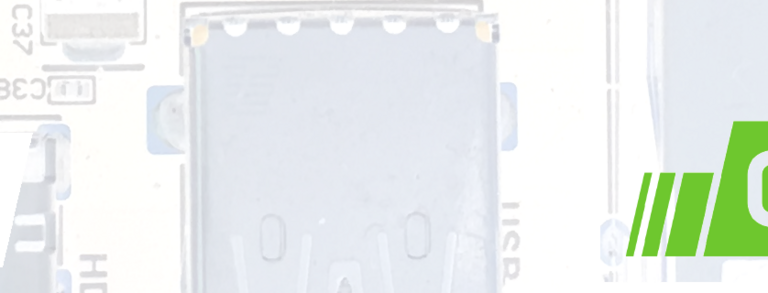Autonomous Racing - Seminar
What is the purpose of the seminar?
- All seminar topics are relevant for the success of the project group.
- To get an overview of the problems and solution approaches.
- To give all group members a common basic understanding of the problems.
- To get familiar with a specific sub-area in order to be able to lead related sub-groups later on.
Scope and objectives
- 30 minutes presentation + 8 - 10 pages elaboration.
- Familiarization with the details of the given sub-problem.
- The presentation should provide all group members with a basic understanding of the subproblem and corresponding possible solutions.
- Please include details in the paper.
What is the purpose of the written elaboration?
- For documentation for the group members.
- Can be used for the interim/final report.
Helpful links
Seminar Topics
1. Projektmanagement - Timo
Beschrieben werden sollen die Grundlagen des Software Projektmanagements, verschiedene Rollen der Projektteilnehmer, Projektphasen, Organisation der Projektarbeit (planen, verteilen, etc.), Management der Projektressourcen, Kontinuierliche (Um-)Planung hinsichtlich Projektzielen, Dokumentation und Berichtswesen und die menschliche Komponente im Projekt (kann sich an den Ausführungen in 'Projektmanagement für Ingenieure: Ein praxisnahes Lehrbuch für den systematischen Projekterfolg' orientieren).
Hilfreiche Vorkenntnisse: Projektmanagement, Verstehen der BWL-Sprache :)
Literatur:
- Alexander Schatten, Dietmar W. Markus Demolsky D. Markus Demolsky: Best Practice Software Engineering - Eine praxiserprobte Zusammenstellung von komponentenorientierten Konzepten, Methoden und Werkzeugen.
- Christian Aichele, Marius S.: IT-Projektmanagement Effiziente Einführung in das Management von Projekten.
- Jakoby, Walter: Projektmanagement für Ingenieure: Ein praxisnahes Lehrbuch für den systematischen Projekterfolg. (https://link.springer.com/book/10.1007%2F978-3-8348-2274-1)
- www.oreilly.com/library/view/rt-essentials/0596006683/ch01.html
2. Rekursive Zustandsschätzung
Das Problem der Zustandsschätzung soll motiviert und mit Bezug auf unsere PG kontextualisiert werden. Darüber hinaus soll das Bayes-Filter sowie das Kalman-Filter vorgestellt werden (das normale KF genügt erstmal). Des weiteren sollen die Annahmen, Vorteile, Nachteile und die Grenzen der Modelle dargestellt werden.
Hilfreiche Vorkenntnisse: Lineare Algebra, Wahrscheinlichkeitsrechnung
Literatur:
- Sebastian Thrun, Wolfram Burgard, and Dieter Fox. 2005. Probabilistic Robotics (Intelligent Robotics and Autonomous Agents).
3. Sensorik & Aktorik des Fernlenkautos - Jan Henrik
Konzeptionelle Funktionsweise der Sensorik und was in welchem Bezugssystem gemessen wird: Gyroskop, Beschleunigungssensor, Magnetometer. Des weiteren soll die Aktorik des Fernlenkautos d.h. die Lenkung und der Antrieb vorgestellt werden.
Hilfreiche Vorkenntnisse: Mathematik
Literatur:
4. Simultaneous Localization and Mapping
Das SLAM Problem soll erklärt und mit Bezug auf unsere PG motiviert werden. Darüber hinaus soll exemplarisch das Hector SLAM Verfahren vorgestellt werden.
Hilfreiche Vorkenntnisse: Lineare Algebra, Wahrscheinlichkeitsrechnung
Literatur:
- Sebastian Thrun, Wolfram Burgard, and Dieter Fox. 2005. Probabilistic Robotics (Intelligent Robotics and Autonomous Agents).
5. Kinematik und Dynamik des Fernlenkautos - Marcel
Wie ist die Kinematik des Fernlenkautos und welche physikalischen Kräfte sind im Rahmen unserer PG relevant.
Hilfreiche Vorkenntnisse: Mechanik
Literatur:
- https://link.springer.com/content/pdf/10.1007%2F978-3-319-62533-1.pdf
- Manfred Mitschke, Henning WallentowitzDynamik der Kraftfahrzeuge
6. Automatic Control & Model Predictive Control
Einführung und Motivation einiger Grundlagen der Regelungstechnik. Was ist Regelungstechnik, Worum geht es? Was ist das Ziel? Was sind die Modelle? Darauf aufbauend soll dann auf die Besonderheiten von Optimal / Model Predictive Control eingegangen werden und mit Bezug auf die Problemstellungen dieser PG erklärt werden.
Hilfreiche Vorkenntnisse: Signale & Systeme, Regelungstechnik, HM1-3, Optimierung
Literatur:
- https://link.springer.com/book/10.1007%2F978-3-662-52678-1
- https://link.springer.com/chapter/10.1007/978-3-642-53944-2_7
- Otto Föllinger: Optimale Regelung und Steuerung
- E.F. Camacho and C.Bordons: Model Predictive Control
7. CUDA Programmierung
Hilfreiche Vorkenntnisse: Programmierkenntnisse, Rechnerarchitektur
Literatur:
8. ROS und Gazebo (Aufbau und Demonstration einer Testumgebung) - Jan
Hilfreiche Vorkenntnisse: Linux, Programmierkenntnisse
Literatur:
9. Neuronale Netzwerke
Hilfreiche Vorkenntnisse: Wahrscheinlichkeitsrechnung, Analysis, Lineare Algebra
Literatur:
10. Image Processing
Hilfreiche Vorkenntnisse: Bildverarbeitung, Computer Vision, Diskrete Mathematik
Literatur:
11. Objekterkennung & Feature generation
Hilfreiche Vorkenntnisse: Bildverarbeitung, Computer Vision, Diskrete Mathematik
Literatur:
12. Koordinatensysteme und und Koordinatentransformationen - Robin
Körperfeste Systeme, Rotationen, Translationen, Homogene Koordinaten, Euler-Winkel, Beschreibungen von Dynamik in bewegten Bezugssystemen.
Hilfreiche Vorkenntnisse: Lineare Algebra, Mechanik
Literatur:

